Rifling is a series of grooves cut in a spiral pattern inside the barrel of a firearm. These grooves spin-stabilize the projectile producing straighter and more accurate flight. The importance of putting a spin on a projectile was known to archers for a long time and was implemented by offsetting the fletching feathers on their arrows. It was first applied to firearms in Germany starting in the late 15th century. The early examples were greatly improved upon by the middle of the 16th century.
A rifles projectile must have a tight fit to engage the grooves and spin. This makes a rifle much more difficult to load than a musket. Small greased patches have to be supplied to the riflemen to wrap the projectile, and much more force used to seat it properly. This generally slows the loading process to roughly half that of a comparable musket. Additionally most 18th century rifles were not designed for military service and so have no provision for mounting a bayonet and are not built robustly enough to survive hand to hand combat. This puts the rifleman at a great disadvantage in close quarters combat.
Evidence for use of rifled guns in the French and Indian war is common, but no known guns survive from the main period of the conflict. Newspapers in many places were advertising rifle parts for commercial sale as this example from South Carolina shows;
The SOUTH-CAROLINA Gazette
November 4, 1756
JOHN DODD , Gun-Maker in Meeting-Street
CHARLES-TOWN
HAS to sell a parcel of very neat rifle-barrel guns, from 3 to 4 feet in length; and continues to do all sorts of gun-work in the best manner.
Accounts of native raiders in Pennsylvania with rifles appear as early as 1730 and go all through the French and Indian war period. Robert Kirk, a private in Montgomery’s Highlanders (77th Foote), purchased a rifle during his period of Indian adoption over the winter of 1758-59.
“We hunted here for two moons or better and had great success. Some French traders coming up the Ohio, exchanged powder and shot with us for furrs and skins. I had succeeded so well in this party that I bought a riffle gun, some powder, and two new blankets, one of which I sent as a present to my adopted spouse, which was received as a great mark of my love and affection” (McCulloch & Todish, 48)
Natives lived and died by their ability to hunt and recognized the superior abilities of rifled guns.
‘Riffled Carbines’ were issued to the light infantry for Abercromby’s Ticonderoga campaign at a rate of one per ten men in the following regiments; 27th, 42nd, 44th, 46th, 55th, 60th, 80th (Gages Light Armed), and Bradstreets Batteaumen.
Gerneral order for 12 June 1758 were “Fort Edward Camp. Each Regt. to receive 10 riffled pieces from the store, and to return the like number or firelocks for them”.
July 1, 1758 ” Capt Sheperds Company of Rangers to discharge thier pieces between 3 and 5 this afternoon. The Regts may try thir riffles at the same time”.
As for the provincials Colonel Bouquet, of the 60th Royal Americans, wrote, “A large part of the provincials are armed with grooved rifles, and have molds. Lead in bars will suit them better than buttlets—likewise the Indians—but they also need fine powder FF”
Production of Jaeger style rifles took place in the German states from the beginning of the 17th century and were in military service with specialist German troops from the 1650s. Sweden began importing them in 1711 and they would have been commercially available in Europe and could have been imported into America or immigrated with Germanic and Swiss settlers.
The oldest surviving American rifle is the John Shreit rifle housed in the William duPont collection and dated to 1761. Unfortunately this rifle was rebuilt in the early 19th century and so cannot be used as an example of an F&I era gun. The first of the famous Pennsylvania long rifle makers, Andreas Albrecht, opened his shop in Christian Springs PA in 1761. These early guns probably resembled trade muskets and were intended for sale, although not exclusively, to the natives.
Although rifle choices in history were many, the modern F&I era rifleman has a much more limited selection. The only production replica rifle available today is Pedersoli’s Jaeger rifle and that is the one I’ve been carrying this season. Other historic guns are only available in kits or parts sets and require considerable gunsmithing skills to complete them. This comes with the advantage of uniqueness but at considerable cost. As always speak with your officers and NCOs before spending money on a gun that may not be appropriate
Sources
Ian McCulloch and Timothy Todish Through So Many Dangers; The memoirs and Adventures of Robert Kirk, Late of the Royal Highland Regiment. New York NY, Purple Mountain Press, 2004
Peter A. Alexander The Gunsmith of Grenville County; Building the American Longrifle. Texarkana TX, 2012
Ian McCulloch & Tim J Todish British Light Infantryman of the Seven Years War; North American 1757-1763. Wellingborough UK, Osprey Publishing 2004
(Wikipedia) https://en.wikipedia.org/wiki/Rifling



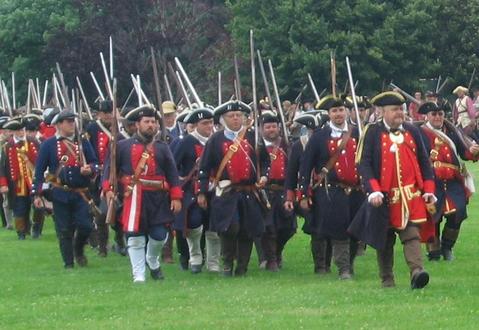
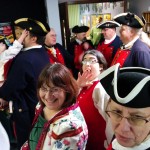
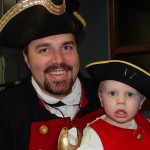

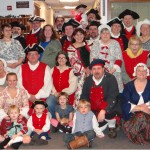
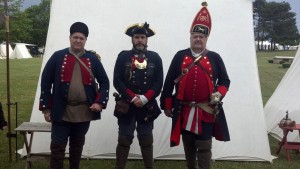

 It is with the greatest lament and condolences that I must inform you all that one of the most loved members of the Massachusetts Provincial Battalion, John Timberlake of Ohio, passed away in his sleep on a business trip in a motel room March 8, 2011. John was a member of the organization beginning since 1995! John is survived by his wife Lori and two sons and a daughter. His son Paul, who is a past member also of Bagley’s Regiment also called me to tell me the news.
It is with the greatest lament and condolences that I must inform you all that one of the most loved members of the Massachusetts Provincial Battalion, John Timberlake of Ohio, passed away in his sleep on a business trip in a motel room March 8, 2011. John was a member of the organization beginning since 1995! John is survived by his wife Lori and two sons and a daughter. His son Paul, who is a past member also of Bagley’s Regiment also called me to tell me the news.